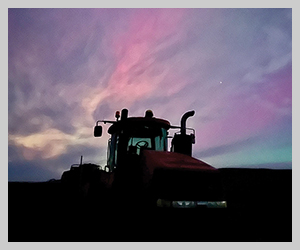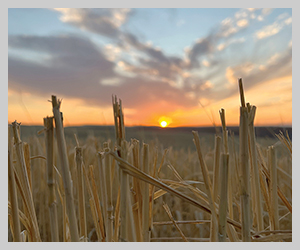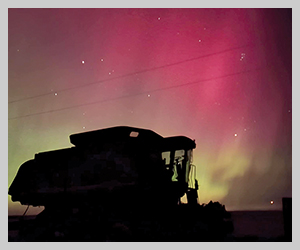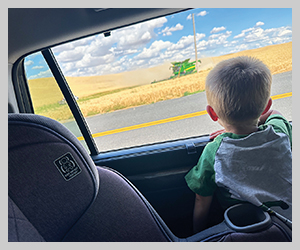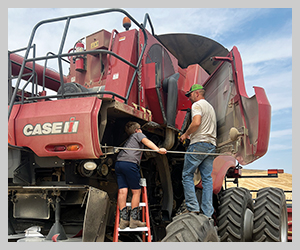It’s all about the water Research explores limitations cover crops in dryland conditions
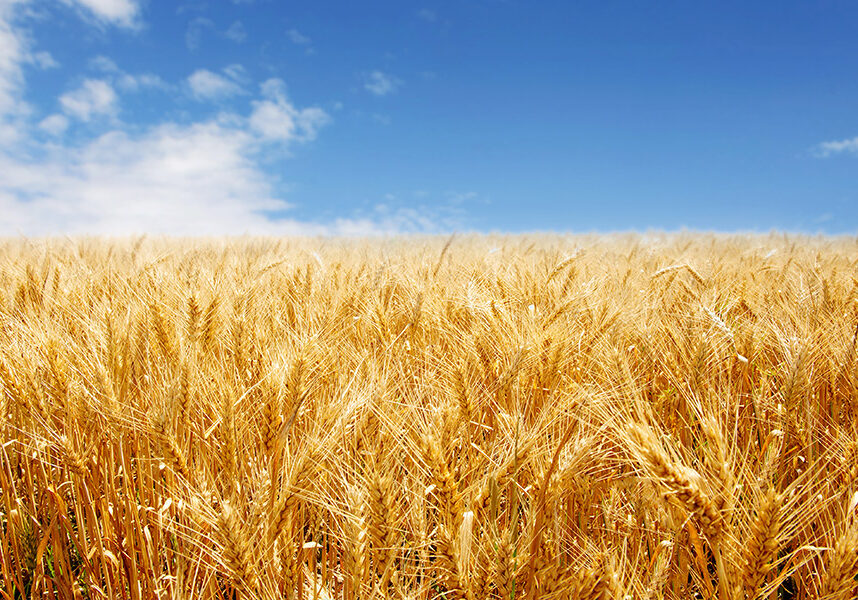
I have seen it work. As a graduate student, I researched cover crops in a California dryland wheat system, comparing a wheat-fallow system to one with a cover crop replacing fallow (McGuire et al., 1998). A wet winter allowed for successful wheat yields in both systems. However, research results suggest that this is often the exception in dryland agriculture. More often, water use by the cover crop reduces the yield of the following cash crop.
This is a problem for improving soil health in these systems. Restoring soil organic matter levels is difficult with long periods of fallow without the addition of plant material to the soil for processing by microbes. Regenerative agriculture has proposed several solutions to this cover crop problem. First, cover crops may allow for greater infiltration rates, thereby saving enough water from running off to make up for the water used to grow the cover crop. Some claim that multispecies cover crops use water more efficiently than monocultures. Finally, it is claimed that planting cover crops could promote more rainfall, thus compensating for the water use by the cover crop.
Let’s explore the evidence for these claims and an alternative that may be more effective than cover crops in some dryland cropping systems.
It’s all about the water
Unlike crops in rain-fed regions, dryland crops cannot be produced using growing season precipitation alone; they must also use stored soil water (Robinson and Nielsen, 2015). This is where cover crops become a problem rather than a solution.
Water from precipitation is destined for one of five pathways:
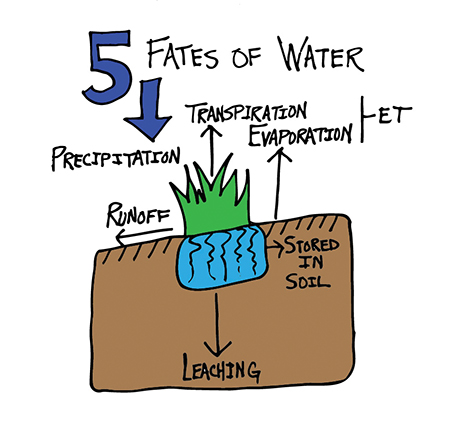
- Water can run off. Improved infiltration can reduce runoff.
- Water can leach below the root zone. Crops or cover crops can intercept this water, but if too much water falls too quickly, they cannot prevent leaching.
- Water can evaporate. Covering the soil with living or dead plants can reduce evaporation by blocking wind and sunlight.
- Water can be transpired through plants. In any region, biomass produced will be proportional to water used. Management should aim to divert more water through transpiration.
- Water can be stored in the soil. This water is subject to either transpiration or evaporation.
Cover crop biomass — roots, root exudates and shoots — is needed to obtain many of the benefits of cover crops: weed suppression, soil organic matter, nutrient scavenging and soil biology activity. Even erosion control requires a minimum amount of biomass to protect the soil. However, biomass production uses water. So, in dryland systems, cover crops are a trade-off of water use for biomass. If a cover crop uses more water than is gained through increased infiltration, reduced runoff or increased soil storage, the following crop yield will be reduced. The timing of cover crop water use relative to precipitation timing and amounts can determine the outcome. Let’s look at what researchers have found.
Meta-analyses find cover crops deplete water before cash crops
A few recent meta-analyses look at cover crops in dryland cropping. Adil et al. (2022) found, compared to fallow management, cover crops:
- Reduced soil water at wheat planting (240 observations).
- Reduced winter wheat yield (138 observations).
- Reduced water use efficiency (199 observations).
Another analysis of 38 studies (Garba et al., 2022) found yields decreased by an average of 11% after cover crops in temperate dryland environments. Overall, they estimated that an annual precipitation of 27” is needed to avoid reduced crop yields following cover crops. Although crop yield may not be the only relevant factor, this aspect of cover cropping adds risk to a cropping system that is already risky because of highly variable annual precipitation.

Cover crops in the Palouse?
A threshold of 27” eliminates nearly all the dryland cropping region from Eastern Washington, but averages like this do not consider many regional climate differences (see Figure 2). Unfortunately, local research suggests the threshold may apply here.
- Doing on-farm research (12-17” of annual precipitation), Roberts (2018) found that cover crop’s use of water put fall crop germination at risk. The farmers in this study decided to pursue companion crops instead.
- On-farm research in Douglas County (9-12” annual precipitation) found that cover crops reduced soil water levels compared to fallow. (Michel, 2022)
- More on-farm research at five sites in southeast Washington (12-25” annual precipitation) tested spring cover crops in place of fallow (Thompson, 2014). Fallow ground, even without residue cover, evaporated less than half of what the cover crop used. This resulted in much higher soil water levels after fallow than after the cover crops.
- Research from the University of Idaho (Kahl et al., 2022) found that a cover crop grown for forage reduced soil water by 2-4” compared to fallow. A model estimated that this would reduce following wheat yields in 50% of years.
In a similar Mediterranean climate in Southern Australia, Rose et al. (2022) reviewed the research and concluded that the benefits of cover crops do not balance the risks of water use and effects on dryland cash crops.
Even where cover crops can be grown in dryland systems without affecting cash crop yields, the benefits will only become discernible in the long term because biomass production will be limited to save water. There is also the possibility of reversals of soil benefits resulting from drought years (Simon et al., 2022). It seems the conclusions of the meta-analyses are applicable here.
Details matter
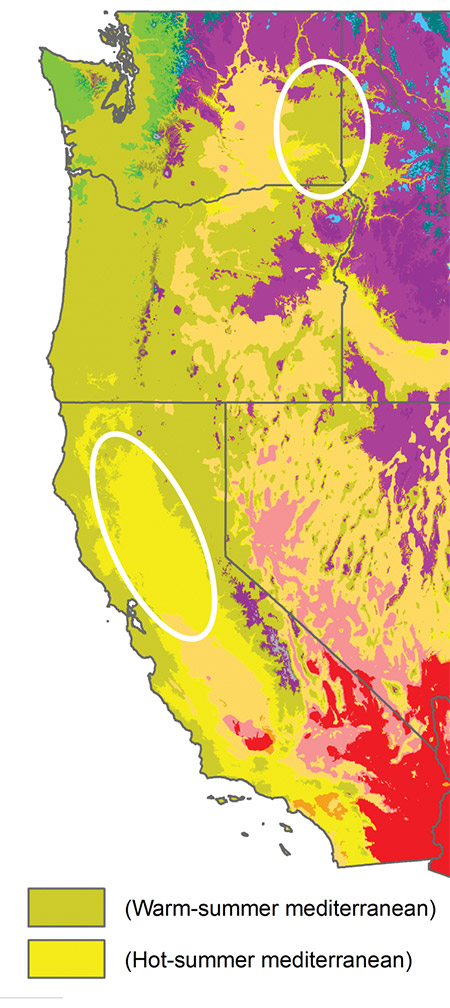
As mentioned before, the timing and amount of precipitation can shift the results in favor of cover crops. When cover crops are growing during the rainy season (see Figure 3) as practiced in California, they may be grown without adversely affecting soil water if they are terminated on time (DeVincentis et al., 2022). In the Garba et al. meta-analyses (2022), using cover crops in climates with significant rainfall during the cropping season had positive effects on crop yield. The opposite was true of climates with mostly winter precipitation.
Improved infiltration?
One suggested solution is that improved infiltration from cover cropping will make up for the water that they use. This can be the outcome, but only in specific conditions where significant rain falls on the growing cover crop or its residues. In all the negative results provided above, we can assume that improved infiltration did not replenish water used by cover crops. A two-year study in Kansas found cover crops increased the efficiency of precipitation storage over fallow, but this did not make up for the water used by the cover crops (Kuykendall, 2015).
One problem is the low biomass production of cover crops due to low precipitation or through early termination to reduce water use (Ghimire et al., 2023). In an eight-year Montana study, cover crops produced less than 1.5 dry tons per acre of biomass (Dagati and Miller, 2020). Because of this, it may take several years before any soil improvements can be measured, including for infiltration.
Do cover crop mixtures help?
Another claim by some in regenerative agriculture is that cover crop mixtures use water differently than monocultures (see examples in Nielsen et al., 2015). Several tests of this hypothesis have been done in dryland conditions (Kuykendall, 2015; Nielsen et al. 2015). With up to 10 species in tested mixtures, the diversity of the cover crop in both studies made no difference in water use. This conclusion is supported by our 2020 systematic review of cover crop mixtures vs. monocultures (Florence and McGuire, 2020). In the 18 comparisons of water use we found, there were no differences between the water use of the best cover crop mixtures and that of the best monocultures.
Plants make rain?
Finally, some claim that vegetation itself can produce more precipitation. As often is the case, there is a grain of truth here. Transpiration by plants moves water into the atmosphere. And that water returns to the soil as precipitation. However, the process remains local only if the air mass stays in the area. This occurs only in humid regions like the Amazon and Congo (Staal et al., 2018). Stretching this tropical rainforest effect to the Great Plains or other arid regions is not supported; irrigation has not increased rainfall in the arid West, nor have large reservoirs of evaporating water changed the surrounding rainfall.
Another effect of plants is called fog combing. As a Peace Corps volunteer in Ecuador, I saw this many times with eucalyptus trees making the soil beneath them wet while the surrounding soil was bone dry. Sometimes, the trees were dripping as if it were raining. Fog combing occurs when humid air moves through vegetation, allowing continuous condensation that builds up and drips to the ground. It happens in rainforests and in the California redwoods. It requires a unique combination of humidity, air temperature and wind speed with some plant-specific factors. A study in Northern Germany (far from dryland conditions) looked to see if cover crops could comb fog. Although conditions were thought to be conducive to fog combing, they found no evidence of it in two years of monitoring cover crops (Selzer and Schubert, 2022).
A workable alternative to cover crops
Cover crop use of water in dryland agriculture presents a series of trade-offs:
- Water use for biomass production and associated soil health.
- Water use and cash crop yield.
- And so, soil health vs. cash crop yield.
Most of the time, the benefits of cover cropping do not overcome their downsides and so are not commonly used in dryland cropping. However, there is a feasible alternative: in their meta-analysis, Adil et al. (2022) concludes that the best practice for soil water conservation and dryland crop production is no-till with retained crop residues. Managed well, crop residues can protect the soil from erosion, maintain some level of soil health, and conserve stored soil water.
The original article is posted on CSNAR’s website at csanr.wsu.edu/wateruselimitationscovercrops/. Visit link for a full list of references. Comments are encouraged.



